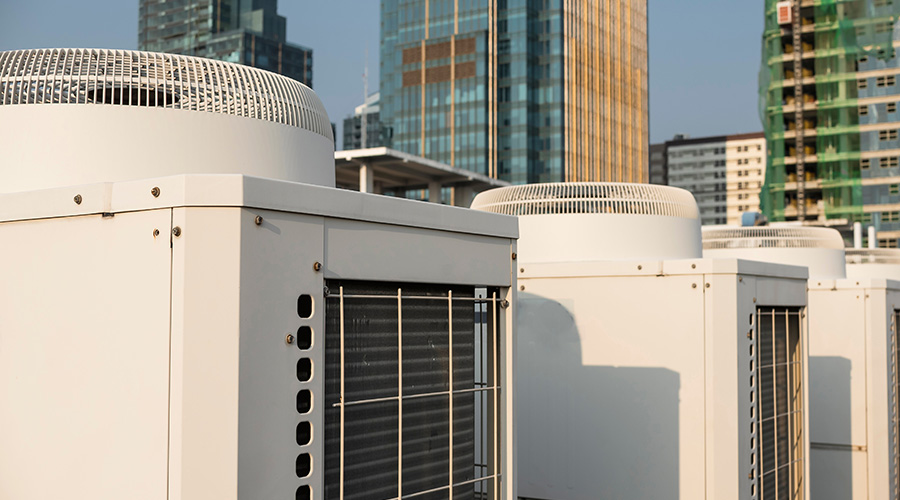Understanding the Power of Solar PPAs
With a power purchase agreement, commercial facilities can take advantage of solar with no upfront cost. But there are a few caveats. Here’s what you should know.
By Matthew E. Cox and Raziye Andican
Solar energy is a hot topic within the buildings and construction industries and will continue to grow in the coming years. This topic’s popularity creates a demand for understanding solar power purchase agreements within the context of commercial projects, and it warrants nuanced considerations for commercial property and construction business owners.
A Solar Power Purchase Agreement (SPPA), also known as a Solar Energy Purchase Agreement (SEPA), is an arrangement between a commercial facility or property, referred to as the host, and a solar service provider, wherein the host agrees to use a solar service provider’s photovoltaic (PV) system. This system converts sunlight into electric energy by solar panels installed on a host’s roof or property, in exchange for the use of the energy produced by the PV system. In this scenario, hosts are businesses, government agencies, and educational institutions using solar electricity with no upfront costs per an SPPA.
An SPPA is a performance-based arrangement where the host pays the solar service provider for the energy produced by its system, which is installed on the host’s property. The solar service provider purchases the solar panels and all other required equipment for the project from a PV manufacturer. Typically, the PV manufacturer provides warranties for the solar equipment, provided it is installed properly. The solar service provider will either self-perform or subcontract the design and installation of the PV system, and they are responsible to specify the appropriate system components and arrange for follow-up maintenance over the life of the PV system.
The solar services provider functions as the project coordinator who may arrange the financing, design, permitting, and construction of the PV system. Many solar service providers have outside investors or developers who will provide equity financing that will receive the federal and state tax benefits for the system. This is how the benefits of an SPPA can be offered at no upfront cost to the host. There may be instances where the investor and the solar service provider will form a special purpose entity (SPE). This allows the project to function as the legal entity that receives and distributes payments to the investors from tax benefits and the sale of the system’s output. The SPPA should explain how the solar service provider is organized and operating with regards to the host’s system.
Generally, the local utility is responsible for servicing the host. They are also the interconnection between the PV system and the grid, and they continue to provide the electric service with the host. This is done to cover the periods when the system is producing less than the host’s electric demand. Some states have net metering, also known as net energy metering (NEM), which allows a host to store energy in the electric grid. NEM is necessary if the PV system produces more electricity than is needed. If the PV system produces more electricity than needed, the additional energy can be sent to the grid in exchange for credits from the local utility. These credits can be used during times when a host’s solar panels are underproducing, such as at night, and the host can use the stored energy from the grid at that time, at no cost, rather than paying the utility based upon the credits accumulated.
Most states have some mandatory net metering requirements, including a cap as to the amount that can be kept, while other states allow the utility to provide a credit for excess electricity generated from the PV system. Some SPPAs provide for the solar service provider to receive all credits.
SPPAs include several different key players within the agreement. The duration of most SPPAs, in the commercial context, typically range between 15 to 20 years. The length of the agreement is typically negotiated between the parties.
Commercial Considerations for an SPPA
There are several benefits a host receives when taking part in an SPPA. First, by using renewable energy, many hosts can make a difference for the environment and be a part of helpful sustainable business practices. Second, there are generally no upfront costs involved in entering into an SPPA. Third, the SPPA hopefully allows a host to lock in low energy costs, but just know there may be an annual price escalator between 1 to 5 percent to account for system efficiency. Currently, system efficiency is known to decrease as the system ages due to cell and battery memory, but technology is improving system efficiency. Lastly, some SPPAs will include a buyout option that will allow the host to buy the system before the end of the SPPA.
A host should also consider the following risks tied to an SPPA.
1. Under an SPPA, a host is generally required to purchase the power produced at a pre-specified rate. If rates decrease, it is possible that a host can be locked into paying too much for the solar energy.
2. Consider if as an Owner you potentially pay less and save more by purchasing your own solar system with a cash purchase or capital improvement loan and receive the tax credits. This of course requires the host to have the capital necessary to accomplish the same and still enter into a contract for the systems installation, and a long-term service agreement with a contractor for maintenance.
3. A host has to grant either an easement or a license for the solar services provider to have access to place and maintain the PV system on a building or property. The host must also determine how to allow access to their building or property while keeping the site secured. Damage to a property through installation and maintenance are considerations, although a well-written SPPA will allocate those risks.
4. Any contract is only as good as the solar service provider with whom an owner is contracting. Under an SPPA, a building or property owner or manager has no ownership or control over the solar equipment. Because of this, the host is reliant on the solar services provider to repair and maintain the system, which can be frustrating if the system is not being properly maintained. If there are issues with the PV system, the solar service provider is likely contracted to pay for the operation and maintenance costs. It is important to make sure the solar services provider is reputable, financially sound and will be around for twenty years and beyond. As a commercial building or property host, consider in an SPPA what happens if the solar services provider is acquired by another company, goes bankrupt, or simply closes the doors.
This list of considerations is not exhaustive. This list is merely for educational purposes only and is not legal advice.
While there are always various factors worth discerning for any type of agreement between parties, an SPPA may be a great option for a host for the reasons stated above. However, there are also benefits for a host to have control over its own PV system and receive the tax benefits for the PV system. If you are a commercial owner interested in exploring an SPPA, consult with an attorney that understands the intricacies of an SPPA and make sure your risks and rewards are properly allocated and accounted.
Matthew E. Cox, partner, and Raziye Andican, associate, are attorneys with Smith, Currie & Hancock LLP, in the firm’s Columbia, South Carolina, and Tysons, Virginia, offices, respectively.
Related Topics:












